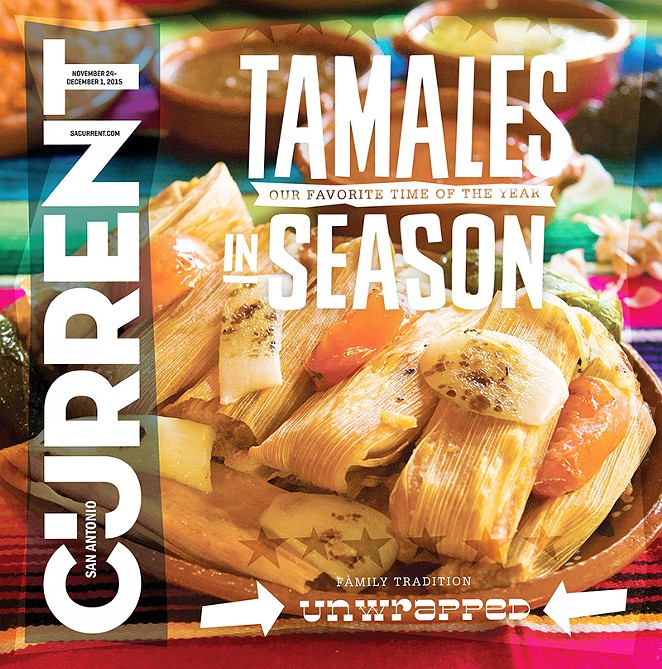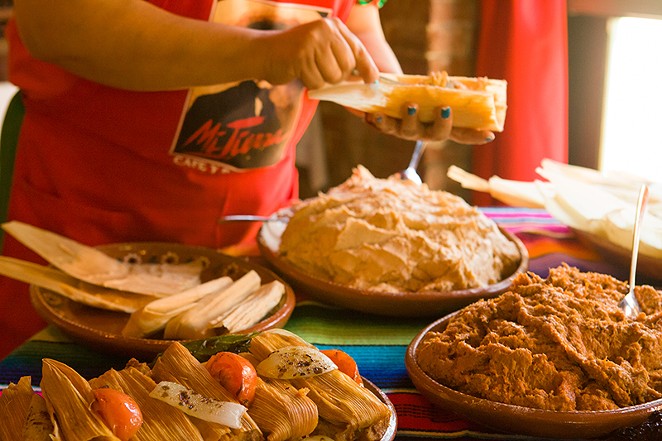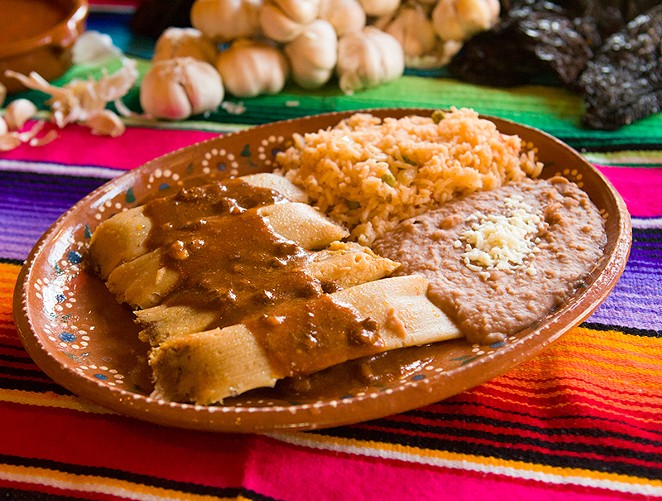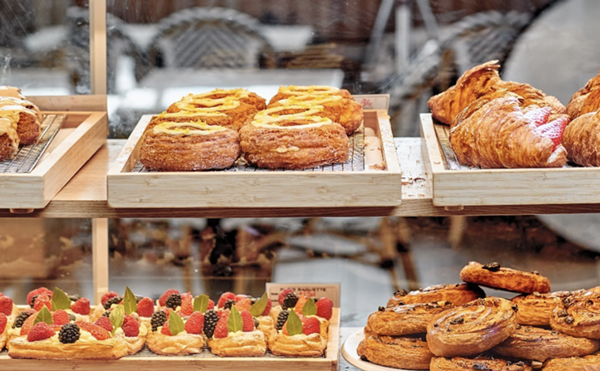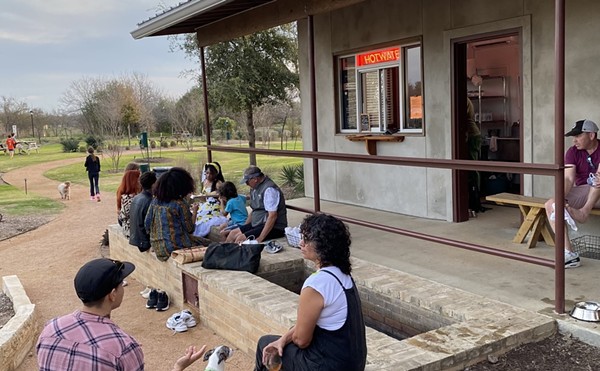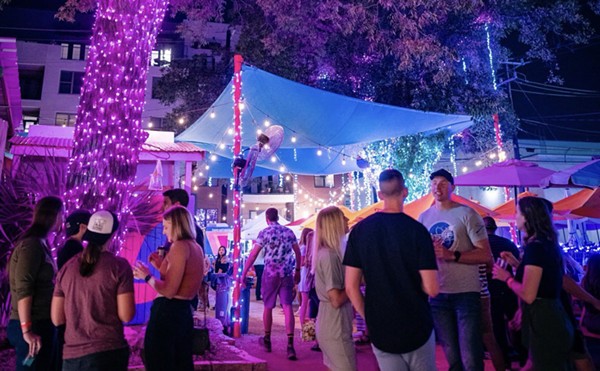That’s how Dr. Elle n Riojas Clark describes the quantity of rich corn goodness that is required for the
There’ll be 125 pounds of masa ready to go at the Guadalupe next month when Clark, San Antonio’s Gran Tamalera, hands over the demonstration to the Cortez family, owners of the Mi Tierra restaurants.
Clark, professor emerita of
“Cuisine is an important cultural teaching tool,” Clark said. “To eat a tamale, you’re eating something with a recipe hundreds and hundreds of years old and the recipe pretty much stayed the same. It gives you a deeper understanding.”
(Clark, like many San Antonians, freely code-switches between the Spanish tamal and the English tamale.)
The recipe, she says, is simple.
“The recipe is the flavor you remember from your mother,” Clark said. “Your memory is the recipe.”
At La Gran Tamalada, participants will learn the basic steps, which can then be tweaked with seasonings until their tamales taste like home.
For basic pork tamales, Clark
“It’s not a
Enter the
“Long story short, we have
Clark is living proof that one can learn this craft. Her mom didn’t make tamales when she was growing up. But that didn’t stop her from learning from her aunts as an adult and hosting huge
“A family will be talking, conversing and collaboratively making a dish,” Clark said. “It’s a family event. That’s the most important thing: to give value to your own experiences and your family’s cultural history you didn’t know.”
From these large
“Guadalupe is all about preserving and promoting our culture and keeping traditions alive,” Menchaca said. “What better way than learning the history of the
Within a couple of years, Clark had brought on her dear friend, 2015 Poet Laureate of Texas, Dr. Carmen Tafolla, to help with the
“What’s unique about The Gran Tamalada is
The two would go on to write a book about the cultural significance of the tamal: Tamales, Comadres, and the Meaning of Civilization (Wings Press, 2011). Clark said that people have told her they even read from the book at their own
“They’re teaching,” Clark said. “That is something totally new. Maybe their cultural memories aren’t robust enough and the book fleshes them out.”
It’s that same candor, that storytelling, that commitment to cultural identity through cultural history that brings the people in at her
Clark says there is a renewed interest among the younger generation.
“I think there’s a resurgence,” she said. “People are at least trying. People will come and say ‘We haven’t had one since my mother died. Let’s have them again.’”
Research indicates that cultural revitalization occurs in the third and fourth generation after immigration, Clark said, so it doesn’t surprise her to see the younger crowd filing into the Guadalupe each year.
Two years ago, Clark invited Cariño Cortez, the third generation of Cortez family in the Mi Tierra business, to assist with the
“She is a chef,” Clark said. “She’s trained and has skills and ability, but it’s also in her corazón.”
Cortez assisted the
Mi Tierra runs a large hand-made
“Our restaurants are more than restaurants,” Cortez said. “We are teaching people about culture and hospitality.”
Cortez plans to have her parents, uncle, nieces and nephews all around the table as they show the art of making tamales next month. Clark and Tafolla will be present as well to pass the torch and be the
“It makes sense that our
La Gran Tamalada will take place on December 12 at the Guadalupe Theater, 1301 Guadalupe St., from 11 a.m. to 1 p.m. The free event is open to the first 300 participants. At the
“It’s a lasting impression for their kids, a lasting food memory,” Cortez said. “Whether Hispanic or not, it’s a great tradition to pass on.”
Caption: Think about the cultural heft of the

